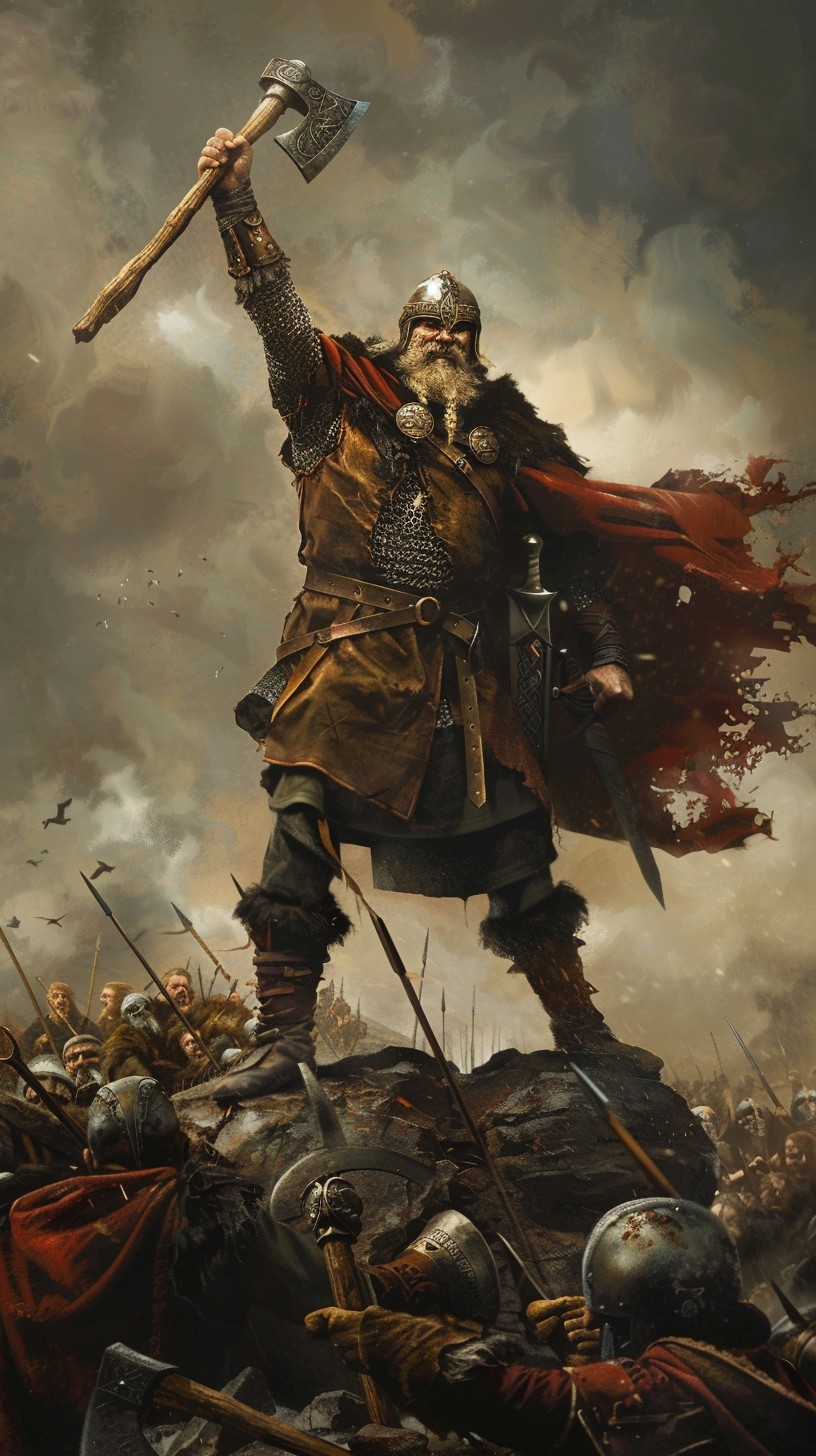Understanding the Barbarian Mindset

In crafting a story about the Fall of the Roman Empire I wanted it be as true to real events as possible. To that extent it was necessary to avoid tired old stereotypes about the various peoples who inhabited the world of that time. Nowhere is this more the case than with the barbarians.
The word “barbarian” as it was used by the Romans was not a pejorative and had a more neutral meaning, like foreigner or outsider. Only in later centuries did it acquire the negative connotations we associate with it today: brutal, thuggish, and uncouth. It doesn’t help with our understanding of these peoples that the names of the three most prominent groups, the Huns, the Vandals, and the Goths, have also acquired negative connotations, in some cases quite bizarre ones. The Huns were not Germans, the Vandals did no more property damage than any other group, and the Goths had absolutely no knowledge of vampires nor any other association with the undead. So, who were these people?
The Huns originated somewhere east of the Russian steppes, perhaps as far east as modern day Mongolia. The similarities between the Huns and the later Mongols is striking. Indeed, they may have sprung from the same gene pool. Certainly their nomadic horse-riding cultures had a lot in common. The Huns moved annually from summer to winter pastures, and in times of blight, or perhaps because of disputes with their neighbors, they had to seek out new pastures. Migration was a way of life for the Huns.
The Vandals also migrated. However, what caused them to migrate remains a mystery. The Vandals were originally a Germanic people who resided between the Vistula and Oder rivers in modern day Poland. In the late third century CE they migrated south to modern day Serbia and from there moved west, winding up in northern France in the early fifth century CE. In France they came into conflict with the Franks. With help from another migrating tribe called the Alani (from modern day Iran), the Vandals defeated the Franks and migrated south en masse to modern day Spain. It was in Spain that the Romans decided to make a virtue of necessity and granted the Vandals and Alani land in exchange for their service as mercenaries in the Roman army. As you will see, this proved to be problematic.
The Goths likely originated in Sweden and migrated south to the Black Sea in modern day Ukraine in the early second century AD. By the middle of the same century they were already being recruited by the Romans as mercenaries. The Black Sea territory they inhabited lay adjacent to the Roman province of Dacia (modern day Romania), which Emperor Hadrian had partially withdrawn from a hundred years earlier, marking the farthest extent of the Roman Empire before it began to retract.
The withdrawal of Rome from Dacia left a power vacuum that was quickly filled by migrating tribes, among them the Goths. In the course of the next century the Goths defeated their rivals and settled the area. They were in Dacia at the foot of the Carpathian Mountains in modern day Romania when the Huns struck.
What drove the Huns so far west is a mystery, but when they arrived in Dacia they were equipped with superior technology in the form of recurve bows that could shoot farther and more powerfully than standard bows, and also demonstrated superior riding skills that made them more agile on horseback than their rivals. They quickly overwhelmed the Goths and put them to flight.
The Goths fled south to the Danube River in modern day Bulgaria. The Danube was the hard border between the Roman Empire and its northern frontier. For a brief time the Goths were given refuge south of the river, but as their numbers continued to grow the Romans changed their minds and tried to push them back. The Goths revolted and ran amok. War ensued, and the Romans were defeated on the battlefield at Adrianople in 378 CE. This marked the beginning of the end for the Roman Empire.
Over the course of the next century Rome’s borders were penetrated again and again by barbarian invasions. The Goths migrated south into Greece, crossed over to the Italian peninsula, sacked Rome in 410 CE (depicted in “The Wind in the Embers”), then moved west into southwest France. The Huns followed the Goths south across the Danube, and wreaked havoc in the Balkans. The Vandals migrated south across the Straits of Gibraltar into North Africa where they conquered the vital Roman port of Carthage (modern day Tunis, Tunisia). Other barbarian incursions from the Franks, the Suebi, and the Burgundians, and others occurred around the same time. But what did all these barbarians want? What caused this devastating implosion for Rome? Exactly what were the barbarians thinking?
The seeds were sown when natural born Roman citizens refused military service. First, the upper classes refused to do their duty and hired lower class substitutes to fight for them. Then, over time, the middle and lower classes refused, taking it as a privilege of Roman citizenship to refuse military service. As a consequence, Rome’s military leaders had to look elsewhere for soldiers to fight its wars. They found willing recruits among the barbarians.
By the late fourth century CE the ranks of the Roman army were made up primarily of barbarian mercenaries. Thus, when Rome sent troops to confront the barbarian invaders, they were sending barbarians to fight other barbarians. A few of these barbarians rose to become commanders, and as Rome’s emperors became increasingly weak and feckless, these commanders played vital roles in determining Rome's military policy. By the time the Empire fell in 476 CE, military commanders with barbarian origins were solidly in charge.
Now imagine yourself a barbarian serving in the Roman army. You are being paid to fight other barbarians (some may even be your brothers). In the course of your service you have become well acquainted with Roman bureaucracy and military hierarchy. At some level you might even consider yourself to be a Roman. Then suddenly you are cashiered. The war is over. The army doesn’t need you anymore. Your pay stops and you are cut loose. You are disappointed, resentful. Thus, when the tribe you were born into initiates a new campaign to seize Roman lands and reaches out to recruit you, you switch sides without reservation.
But why is your tribe doing this? Why are they seizing Roman lands?
Quite simply because it proved worthwhile in the past. By the fifth century CE Rome had a long history of granting barbarians land as a way to settle conflicts and acquire a military commitment in return. These tribes were bound by treaty to come to Rome’s defense when called upon. In exchange they were rewarded with land. It was not lost on these people that they had come by this cushy arrangement by aggressively attacking Rome, and so they continued doing so.
Thus, our modern view of barbarians as mindless thugs, howling berserkers bent on destruction, is wrong. They were instead shrewd politicians who knew exactly what buttons to push to get what they wanted. The fact that most of their bargaining chips revolved around war and aggression was not because they were violent by nature but because it was the only path Rome left open to them to negotiate.
In my novels I go inside the barbarian mindset to explore the motivations of real life barbarian commanders like Ricimer, Aetius, and Stilicho, men who led the Roman Empire in its fight against the barbarians, and who were deeply conflicted as a result. These are complex characters whose compelling backstories make for great drama, but to get them right I had to go beyond mere stereotypes and understand what drove them. As usual I discovered the truth was more interesting than fantasy, that history was more interesting than make-believe.
